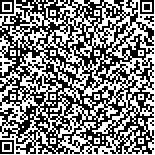|
|
|
| |
|
|
| 本文已被:浏览 925次 下载 1654次 |

码上扫一扫! |
|
|
| 印度洋上层经向翻转环流的冬夏季节对比 |
|
刘雨1,2,3,4, 徐康2,3,5, 王卫强2,3,5, 谢强1,6,7, 王玉国8
|
|
1.中国科学院深海科学与工程研究所 三亚 572000;2.热带海洋环境国家重点实验室(中国科学院南海海洋研究所) 广州 510301;3.南方海洋科学与工程广东省实验室(广州) 广州 511458;4.中国科学院大学 北京 100049;5.中国科学院南海生态环境工程创新研究院 广州 510301;6.青岛海洋科学与技术试点国家实验室 区域海洋动力学与数值模拟功能实验室 青岛 266237;7.中国科学院海洋大科学研究中心 青岛 266071;8.汪蓝海洋技术研究院(珠海)有限公司 珠海 519000
|
|
| 摘要: |
| 上层经向翻转环流(shallow meridional overturning circulation,SMOC)主导热带-副热带上层海洋水体交换,对海洋物质输运和热量交换具有重要意义。基于7套海洋再分析数据产品,本文主要探讨了印度洋SMOC的冬夏季节变化及其差异的原因。结果显示,印度洋SMOC主要由南半球副热带环流圈(southern subtropical cell,SSTC)和跨赤道环流(cross-equatorial cell,CEC)组成,并且具有显著的季节差异。夏季风期间,SSTC和CEC均为表层南向输运,表层以下北向输运的逆时针环流结构。冬季风盛行时,SSTC仍维持逆时针结构,但环流中心南移且深度加深,强度弱于夏季;然而,CEC却转向为表层北向输运,表层以下向南输运的顺时针环流结构,其环流中心位置与夏季接近,环流强度与夏季相当。这种印度洋SMOC冬夏结构差异究其原因主要由风生环流主导,CEC冬夏季节环流方向反转是北印度洋冬夏季风转向的结果,而南印度洋信风的季节性位移和强度变化是SSTC强度和位置季节差异的主要原因。 |
| 关键词: 印度洋 上层经向翻转环流 冬夏季节对比 跨赤道环流 副热带环流圈 |
| DOI:10.11693/hyhz20210100014 |
| 分类号:P724.8 |
| 基金项目:中国科学院战略性先导科技专项,XDA20060502号,XDA13030302号;国家自然科学基金项目,42076020号,41776023号,41731173号;中国科学院青年创新促进会人才专项,2020340号;中国科学院南海海洋研究所南海新星项目,NHXX2018WL0201号;南方海洋科学与工程广东省实验室(广州)人才团队引进重大专项,GML2019ZD0306号;中国科学院重点部署项目,ZDRW-XH-2019-2号;热带海洋环境国家重点实验室(中国科学院南海海洋研究所)自主研究项目,LTOZZ2101号。 |
|
| DIFFERENCE OF THE SHALLOW MERIDIONAL OVERTURNING CIRCULATION IN THE INDIAN OCEAN BETWEEN WINTER AND SUMMER |
|
LIU Yu1,2,3,4, XU Kang2,3,5, WANG Wei-Qiang2,3,5, XIE Qiang1,6,7, WANG Yu-Guo8
|
|
1.Institute of Deep-sea Science and Engineering, Chinese Academy of Sciences, Sanya 572000, China;2.State Key Laboratory of Tropical Oceanography, South China Sea Institute of Oceanology, Chinese Academy of Sciences, Guangzhou 510301, China;3.Southern Marine Science and Engineering Guangdong Laboratory(Guangzhou), Guangzhou 511458, China;4.University of Chinese Academy of Sciences, Beijing 100049, China;5.Innovation Academy of South China Sea Ecology and Environmental Engineering, Chinese Academy of Sciences, Guangzhou 510301, China;6.Laboratory for Regional Oceanography and Numerical Modeling, Pilot National Laboratory for Marine Science and Technology(Qingdao), Qingdao 266237, China;7.Center for Ocean Mega-Science, Chinese Academy of Sciences, Qingdao 266071, China;8.Blue Ocean Academy of Marine Technology(Zhuhai) Co., LTD, Zhuhai 519000, China
|
| Abstract: |
| The shallow meridional overturning circulation (SMOC) dominates the water exchange in the tropical-subtropical upper ocean, and plays an important role in ocean mass transport and heat exchange. Therefore, the seasonal characteristics of SMOC in the Indian Ocean and its possible causes were mainly investigated based on seven datasets of ocean reanalysis products. Results show that the Indian Ocean SMOC is primarily composed of the southern subtropical cell (SSTC) and cross-equatorial cell (CEC), and exhibits remarkable seasonal differences. When summer monsoon prevails, both the SSTC and CEC are featured by the anticlockwise overturning cell with southward flows in the surface layer and northward flows in the subsurface layer. In contrast, the winter SSTC still displays an anticlockwise structure, but the corresponding center shifts southward, and becomes deeper and weaker than that in summer. However, the winter CEC turns to be clockwise with northward flows in the surface layer and southward flows in the subsurface layer, and the depth and intensity of the corresponding center are approximately close to the counterparts in summer. Such seasonal differences in the Indian Ocean SMOC are dominated by the wind-driven circulation. The seasonal reverse of the CEC in the north Indian Ocean is a result of the changes of the Indian summer and winter monsoon, and the seasonal differences of the intensity and location for the SSTC are mainly attributed to the intensity changes and seasonal displacement of the trade wind in the south Indian Ocean. |
| Key words: Indian Ocean shallow meridional overturning circulation seasonal contrast between winter and summer subtropical cell cross-equatorial cell |
|
|
|
|
|
|
